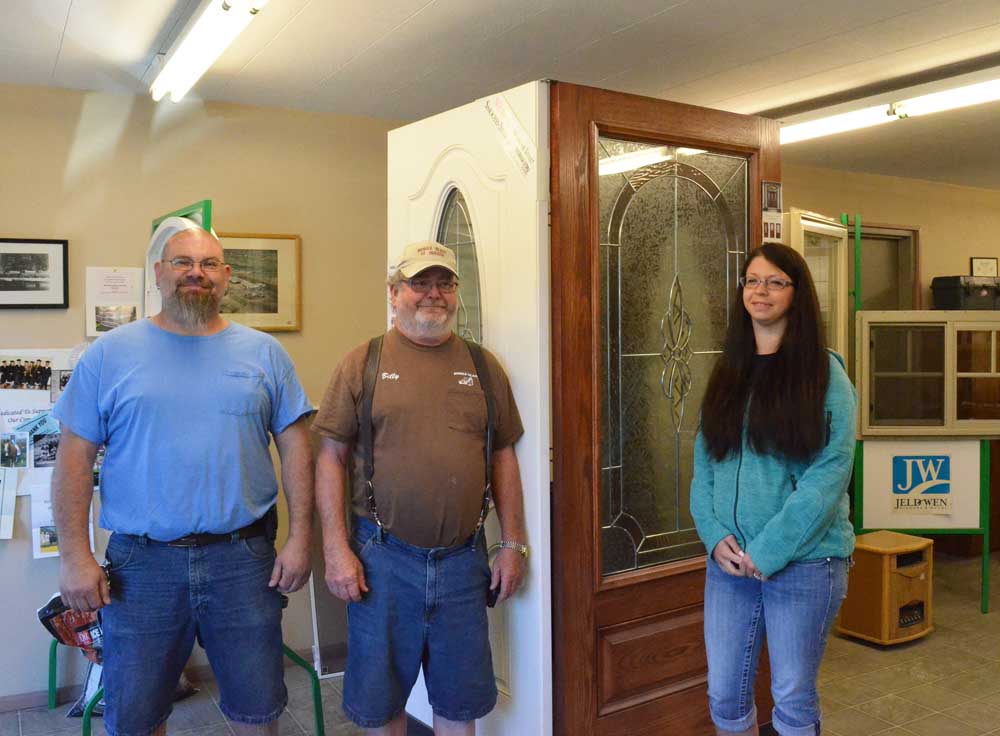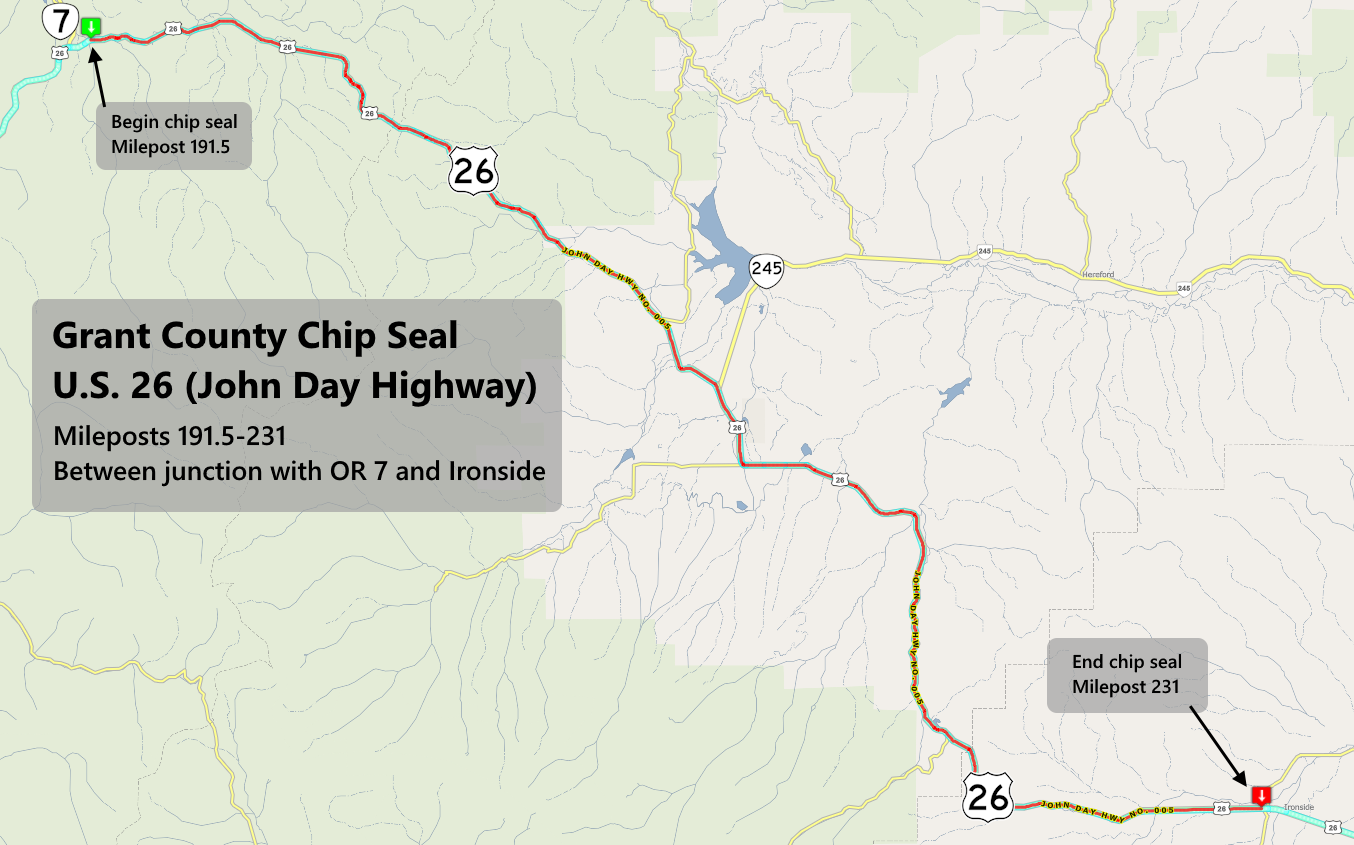Making your home energy efficient
Published 12:45 pm Tuesday, May 29, 2018

- Mobile Glass of John Day also installs pre-hung energy-efficient doors. The crew includes, left to right, Chris Schuetze, Billy Hickerson and Daisy Carpenter.
Improving the energy efficiency of a home can save residents thousands of dollars in the long run, but while some steps are simple and don’t even require tools, other steps may require the assistance of professional contractors and technicians.
According to Touchstone Energy Cooperatives, heating and cooling accounts for about 56 percent of home energy costs on a national average, with appliances and lighting accounting for 23 percent, water heating 16 percent and refrigeration 5 percent.
Homeowners should review the previous year’s utility bills to see how their money was spent on energy use. Based on the national average, a homeowner who spent $2,500 a year for home energy would have paid about $1,400 for heating and cooling, $575 for appliances and lighting, $400 for heating water and $125 for refrigeration.
There are simple steps that can be taken to save on energy bills. Air that moves through cracks, crevices and holes, for example, can increase energy consumption. Homeowners should seal openings around pipes or cables that pass through exterior walls and ensure weather-stripping around doors and windows is tight.
When a fireplace is not operating, the flue should be closed tightly, with a warning sign hung from the flue handle. Outside dryer vent doors should close when a dryer is not in use, which means periodically removing lint accumulation. Attic fans should be sealed tightly during winter, and crawlspace vents should be closed in winter and reopened in summer.
Home insulation, whether it’s fiberglass batts, foam panels or loose-fill cellulose, is rated by an “R” value. Homeowners with R-19 or less insulation in their attics should consider bringing it up to R-38 in moderate climates and R-49 in cold climates. In cold climates, homeowners with R-11 or less floor insulation should consider bringing it up to R-25.
Tyler Sheedy Construction of John Day uses a high-powered fan to blow loose-fill cellulose into attics and walls of new and existing homes. The work can often be done in a day or two, depending on the size and layout of a home.
“Loose-fill cellulose is made of recycled paper that has been treated with borate for fire and insects,” Sheedy said.
The cellulose material doesn’t decompose and does a better job of filling in small spaces than fiberglass batts. The ease of installation also makes it more cost efficient than fiberglass, he said.
“I bring in bags by the semi-load,” he said, noting that he recently insulated the attic space at the John Day Senior Center.
A significant amount of heat is lost through windows. Homeowners with single-pane windows should consider tightening and weather-stripping older windows and adding storm windows. The best option, however, is to replace single-glazed windows with new double-glazed windows.
Mobile Glass of John Day can swap out older windows in a matter of days, depending on the size of the home and how many windows are located on upper floors. New windows will fit into the existing frame and trim, so there’s no need to change interior sheetrock or exterior siding.
The insulating value of a window is called the U-factor, Billy Hickerson said. To qualify for energy rebates, the U-factor must be below 0.29, with argon gas between the panes and a Low-E 366 coating on the interior pane to reflect infrared radiation. While windows with Low-E glass generally cost 10 to 15 percent more than windows with standard glass, they can increase energy efficiency by 30 to 50 percent.
“The Low-E coating not only keeps homes warmer in winter and cooler in summer but also protects carpeting and furniture from fading,” Hickerson said.
Mobile Glass also installs pre-hung energy-efficient doors with a fiberglass core and double-pane glass.
Heating, ventilating and air conditioning (HVAC) equipment account for a large portion of a homeowner’s energy bills. Homeowners should be aware of potential problems but rely on a professional technician for proper maintenance.
HVAC systems should be checked to verify they are moving the correct amount of air. A technician can check for duct leaks and seal them with fiberglass mesh and mastic sealant.
Heat pump systems should be checked annually to verify they are charged in accordance with manufacturer guidelines. Inside and outside heat pump coils should be kept clean and free of debris. Gas and oil furnaces should be tuned for maximum combustion efficiency, and return filters should be changed monthly.
A major improvement to heating and cooling bills can come from installing a mini-split heat pump, which can be readily installed without ductwork. While the state mandates that heat pumps have a seasonal energy efficiency rating (SEER) of 14, newer mini-splits range from 18 to 22 SEER, said Matt Turner of MD Enterprises in Canyon City.
“The unit in my house was putting out 80-degree air when the temperature outside was 15 below,” Turner said.
Installation of a mini-split heat pump can be completed in a day or two depending on the size and layout of a house. Outside units can be mounted on a concrete pad or hung on a wall. A single outdoor unit can be connected to multiple heads located in different rooms and controlled by different thermostats, Turner said.
Energy assistance programs can help residents pay for the energy efficiency improvements needed in their homes.
Oregon Trail Electrical Cooperative has completed more than 25,000 member-initiated conservation projects since 1989 for homes where electricity is the primary source of heat.
Rebates and assistance are available from OTEC for mini-split ductless heat pumps, insulation, windows and smart thermostats used with electric forced-air furnaces.
These financial incentive programs and criteria as well as the amount of rebates change regularly. For more information, contact Susie Snyder at the OTEC office in John Day at 541-575-5426 or visit otecc.com.
The Low Income Home Energy Assistance Program, funded through the U.S. Department of Health and Human Services, is designed to help low-income households with home heating costs. Both homeowners and renters are eligible.
To be eligible for energy assistance through LIHEAP, a household’s income must be at or below 60 percent of Oregon´s median income, which is based on household size and income. A household also must provide documented energy costs.
For more information on LIHEAP, contact Community Connection of Northeast Oregon through the Grant County Senior Center in John Day at 541-575-2949 or visit oregon.gov/ohcs/Pages/low-income-energy-assistance-oregon.aspx.
For more information on local contractors, call Tyler Sheedy Construction at 541-620-1811, Mobile Glass at 541-575-1055 and MD Enterprises at 541-575-2010.






